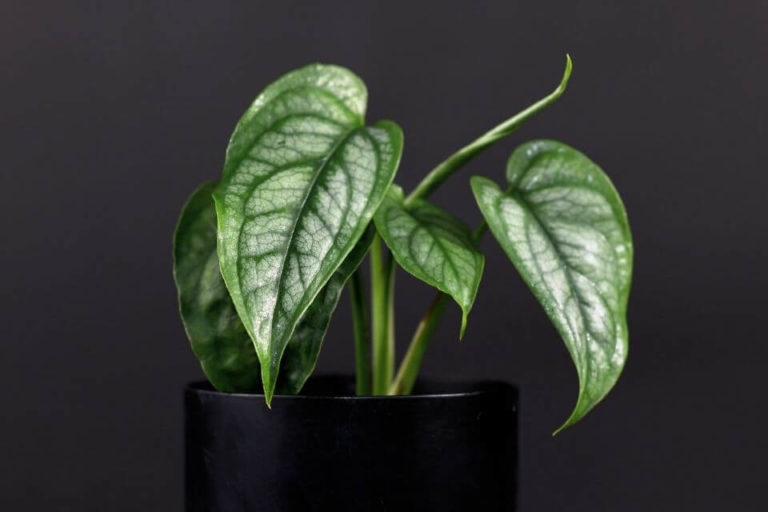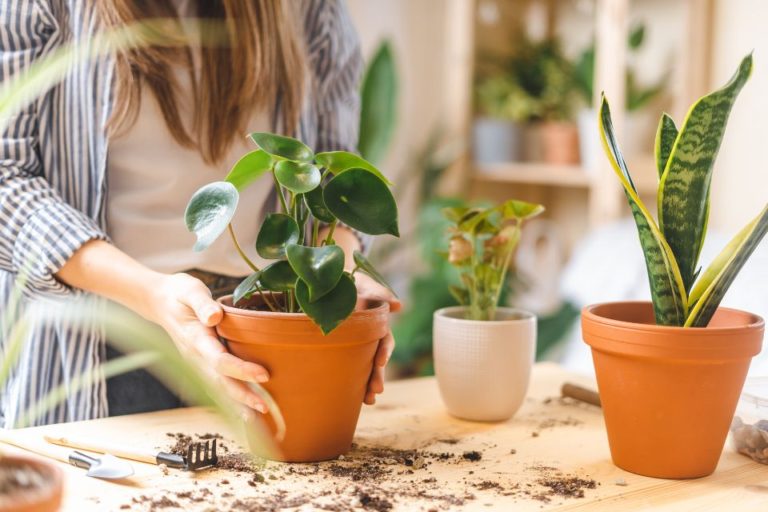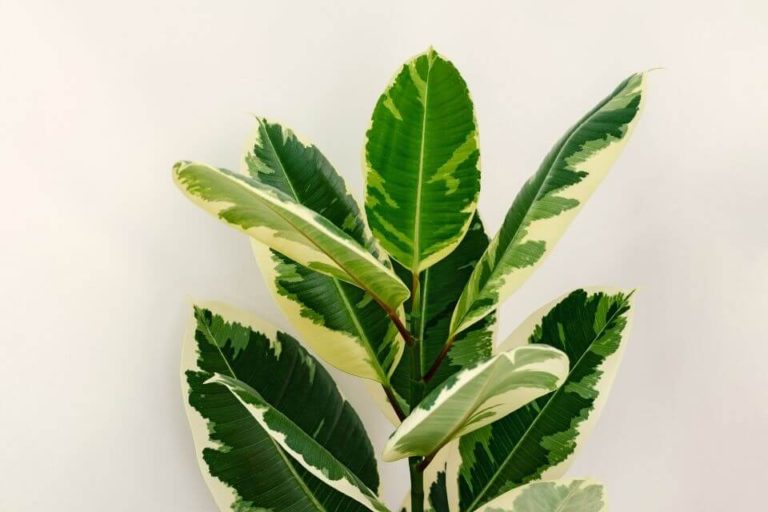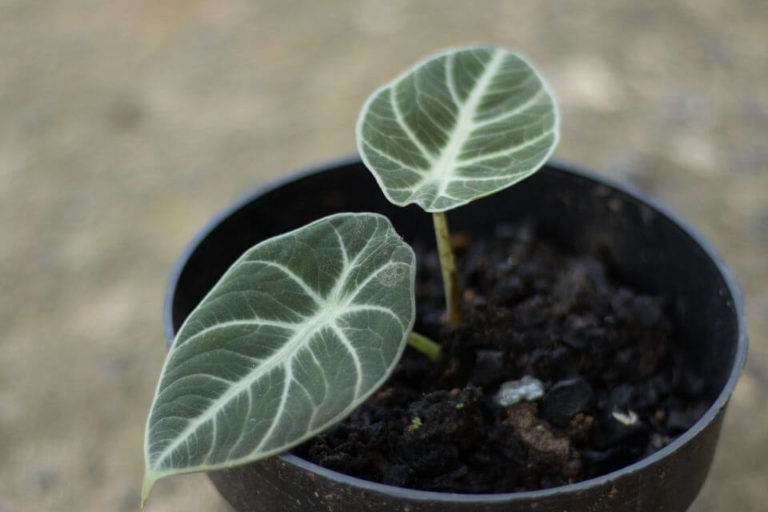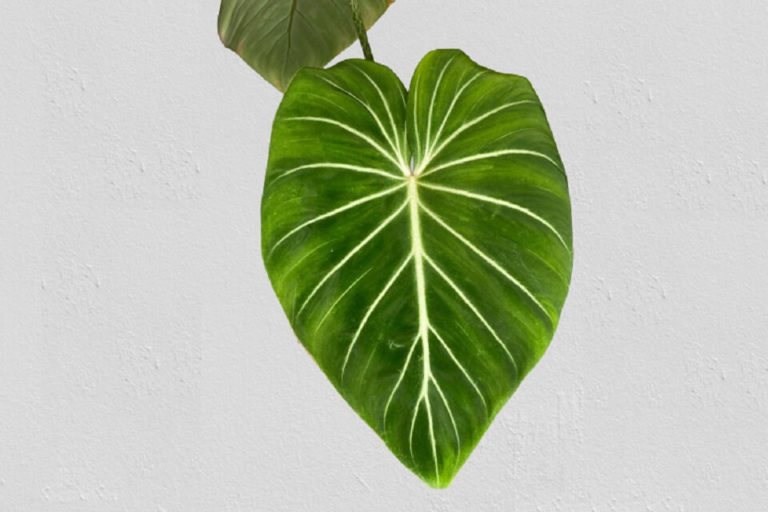Sansevieria Cylindrica Care 101: How To Grow, Care, Propagation & Repot
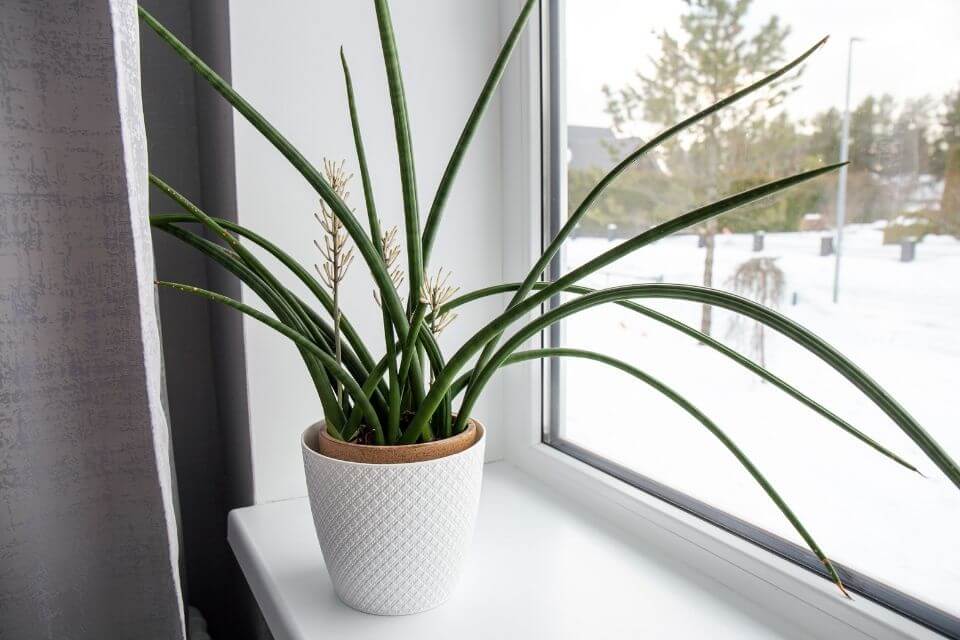
Sansevieria Cylindrica (syn. Dracaena angolensis) is also known as the African Spear Plant, Cylindrical Snake Plant, Spear Sansevieria. This is one of the most popular plants in the world and is loved by beginners, experts, and green thumb gardeners.
It has long, beautiful leaves with stunning shades of green making them perfect plants for adding life and color to your indoor space. In this article, we will cover how to care for your African Spear Plant including growth and propagation.
So, if this is a plant you like and would like to grow, keep reading through this article to get well-detailed information. So let’s get started!.
| Highlights: | |
|---|---|
| Common Names: | Sansevieria Cylindrica, Dracaena angolensis, African Spear Plant, Cylindrical Snake Plant, Spear Sansevieria |
| Botanical Name: | Dracaena angolensis, syn. Sansevieria cylindrica |
| Plant Family: | Asparagaceae |
| Plant Type: | Succulent |
| Origin/Native: | Angola in Southern Africa |
| Care Level: | Easy to care |
| Grow Zone: | 10 - 11 (USDA Hardiness Zone) |
| Size: | 4 to 6 feet tall with a spread of 1 to 2 feet, leaves are thick and have a diameter of about 1.2 to 2 inches. |
| Soil Requirement: | Light and well-draining soil with low pH levels |
| Water Requirement: | Medium moisture levels |
| Sun/Lighting: | Full sun (not direct), but require bright light |
| Temperature Req: | 69 - 86 °F (21 to 30 °C) |
| Propagation: | Division, leaf cuttings |
| Toxicity: | Toxic to pets and humans |
| Flowering/Color: | Yes/ White-green blooms that are tubular and tinted with pink shades |
| Uses: | House plant for decorative purposes, air purification. Also, plant fiber is used in making craft jewelry and ropes. |
TABLE OF CONTENTS
What Is Sansevieria Cylindrica Plant?
Sansevieria cylindrica is one of the easy-care succulent plants native to Angola, Southern Africa. It has an upright growth habit and thrives best in bright light.
It has fan-shaped, striped dark green-gray subcylindrical leaves. The leaves reach a maximum length up to 6 feet and a diameter of 1.2 inches from a basal rosette.
This plant is deemed to be a slow-growing plant forming several rosettes from underground rhizomes having three leaves each.
The African Spear Plant got its name “spear” due to the tips of their leaves being protected by a tough sharp point. Dracaena Angolensis plant is ranked among the best plants for detoxifying your air.
Dracaena angolensis plant is may useful in purifying your indoor air by eliminating toxins such as formaldehyde, trichloroethylene benzene, and xylene.
The plant is also effective at producing oxygen at night and during the day, enabling your family to breathe easily.
Uses Of Sansevieria Cylindrica Plant & Placement
The African Spear Plant just like other Snake Plants comes with numerous uses and the main use being its ability to purify the air.
Science teaches us that placing a plant close to where you sleep during the night can lead to suffocation because the plants release Carbon Dioxide at night as they take in Oxygen.
However, this is not the case with Sansevieria Cylindrica. It uses the Crassulacean Acid Metabolism for carbon fixation where it converts Carbon Dioxide into Oxygen at night. This means that you have plenty supply of fresh air.
African Spear Plant also helps to get rid of bad odor or foul air in your interior space. Also the dry and wilted leaves from these plants are not necessarily thrown away but are used as a source of fiber used in making craft jewelry and ropes.
Sansevieria Cylindrica Varieties, Size, And Appearance
– Varieties
All varieties of the genus Sansevieria are succulent plants that grow well indoors making them your most preferred houseplants. Some varieties have long sword-shaped and flat green leaves.
Other varieties including the starfish sansevieria and sansevieria cylindrica have cylindrical round leaves and pointed ends. There are even other varieties such as the Black Gold( Sansevieria Trifasciata) used as air filtering house plants.
Sansevieria cylindrica varieties include:
- Cleopatra Sansevieria
- Banana Sansevieria
- Blue Sansevieria
- Dwarf Snake Plant
- Variegated Whale Fin
- Kenya Hyacinth
- Variegated Snake Plant, and more.
– Sansevieria Cylindrical Plant Size
Dracaena Angolensis plants have a slow and upward growth with stiff leaves that can reach about 4 to 6 feet tall with a spread of 1 to 2 feet. Under the right conditions, this plant can produce spike-like flowers that can up to 3 feet long.
– Appearance
Sansevieria Cylindrica plant has a fan shape with stiff and dark cylindrical leaves. Flower spikes appear on older plants starting from the leaf base.
These spike flowers grow clusters of green with white blooms with a tubular shape and can be tinted with shades of pink.
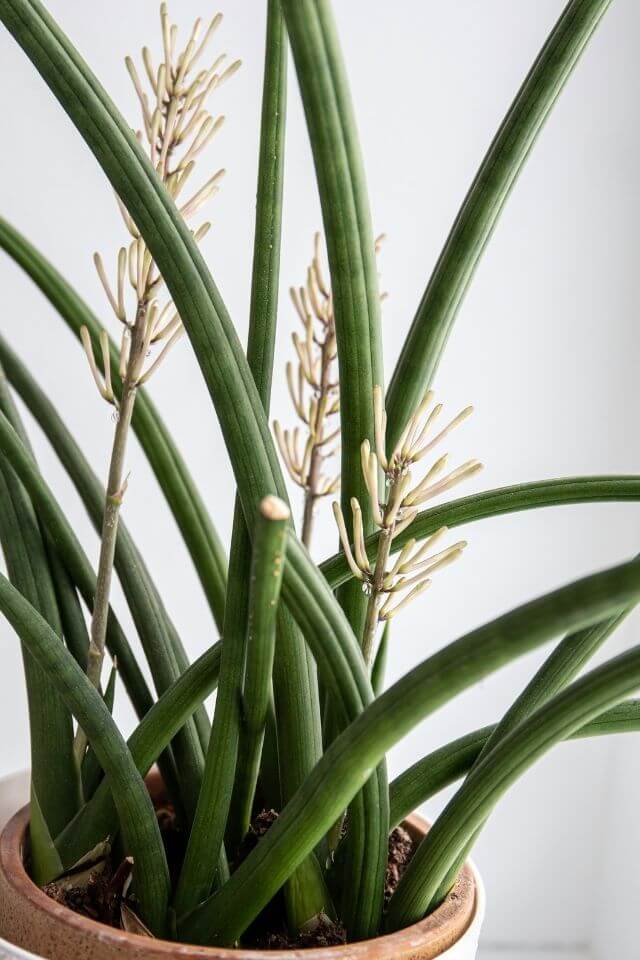
Sansevieria Cylindrica Care & Grow
Caring for your Sansevieria cylindrica is easy making it ideal for both beginners and experienced gardeners. To grow a healthy and thriving African Spear Plant, it is crucial to understand the basics of how to take care of it.
Below is the most important information on how to care for your succulent plant.
– Recommended Pot Size
Sansevieria cylindrica can be grown in a container or pot. When potting or repotting, you will want to use a container or pot with a well-draining potting mix and with draining holes.
When repotting use a pot that is about 2 inches larger than your previous pot or container. These blooming plants are repotted in pots of at least 8 to 10 inches in width and height.
When you plant in a pot make sure you are not burying your plant too deep. Let the top of the soil be just below the plant base or crown.
Additionally, it is recommended to spread out the roots a little before you put them into the pot with soil to prevent packing the soil mix too tightly around your plant.
After repotting do not water your plant for several days to allow the roots to settle in.
– Soil Requirement
Dracaena Angolensis (syn. Sansevieria Cylindrica) thrives best in well-draining soil that is significantly low in nutrients. The plant can successfully grow in a succulent mix or a cactus mix.
If you want to create your soil mix, combine two parts to make your potting soil: the first soil should be coarse sand and the second should be perlite. This soil will drain well just holding the required moisture for the plant to survive.
If you observe that your soil is heavy add more perlite and sand to loosen it up. Whatever media you choose, ensure it is draining well and not too heavy.
– Watering Sansevieria Cylindrica
As mentioned earlier, this is a succulent plant which means it stores water in its leaves and stem. Therefore, it does not require frequent watering because too much water can be harmful. Let the soil dry up between waterings.
To know whether the soil is dry, stick your finger into the soil and if the top inch of your soil mix feels dry, then you can now water the plant.
Depending on the humidity, you might be needed to water your plant rarely or more often. A good rule of thumb is to water your plant once a week.
– Lighting And Exposure
When it comes to lighting and sun exposure, this plant falls between full sun and some shade. The plant thrives well under bright indirect light but some direct sunlight will not harm.
Typically, Dracaena Angolensis (syn. Sansevieria Cylindrica) will need about 4 to 6 hours of bright light per day for proper growth and health.
If you are keeping your plant indoors, place it near the east or west-facing window to get the afternoon or morning sun. When it is placed outdoors, ensure it gets enough sunlight, but also some shade when the sun is too hot.
If it shows signs of wilting, browning leaves, or sunburn, move it to a shadier place.
– Best Temperature Ranges
The African Spear Plant (Dracaena Angolensis) thrives best at room temperatures ranging between 69 to 86 degrees Fahrenheit (21 to 30 °C).
It is recommended that you give your houseplant cooler temperatures of between 7 to 11 degrees Celcius during the night to allow a healthy rest period.
– Required Humidity Levels
This Dracaena Angolensis tropical plant also needs low humidity levels of about 40%. If you reside in a high humidity environment, it is advisable to place your cylindrica in a room with ideal air circulation.
– Fertilizing
Fertilizer should be used sparingly on your plant’s soil because over-fertilizing can burn or even kill your plant. Never plant your sansevieria in pre-fertilized soil.
Moreover, only fertilize this plant during the growing season which is spring or summer. Fertilizing it during fall and winter will enhance new growth which will be susceptible to cold weather damage.
– Pruning Requirement
Generally, this Dracaena Angolensis plant does not require pruning. However, you can trim the leaves to shape them or just add texture to your plant if necessary. Prune the leaves that have dried out or have become too long.
Removing the dried leaves keeps the plant healthy and good-looking. Use a pair of scissors or a knife and cut the leaves as close to the bases s possible.
Disinfect your pruning tools before and after pruning to prevent possible infections.
Sansevieria Cylindrica Repotting with Steps
Step 1
You will gather all the supplies such as a knife or box cutter, gloves, newspaper or plastic to protect the work surface, a new pot, and potting soil made of a cactus pro mix. After this, cover your work surface with a newspaper or plastic.
Then take the Dracaena Angolensis Plant using one hand, grasp the leaves and use the other hand to tug the ceramic pot or plastic.
If it does not slide off, squeeze the pot gently all around to loosen the roots and soil and remove the pot. If, after trying this, it is still stuck, use a box cutter to cut the plastic pot.
However, you will use a pencil or a chopstick for a ceramic container to loosen the soil around the container walls. When doing this, be careful to avoid damaging the Dracaena Angolensis plant’s roots.
Step 2
You will use your fingers to loosen the soil from the roots to ensure the root system is exposed. Exposing the root system will enable you to get rid of any old mushy roots.
Once you have removed all the soil in the root system, you will look for J or L-shaped protrusion in the roots. It is a white fleshy rhizome and it is called pup and then you will cut it to separate it from the main plant.
Step 3
Isolate the pup that has delicate roots appearing on the rhizome. These pups have a high chance of growth. Take your box cutter or sterile knife and cut the rhizome so that the many small roots are preserved on the pup.
Step 4
Prepare the new pots with the ProMix, leaving three centimeters from the top. Take the Dracaena Angolensis plant and re-pot it to the pot. Avoid mounding the soil to the leaves and match it to the marked point on the jar or container.
To secure the Dracaena Angolensis Plant, press the soil gently downwards. If the plant leans, use a stick or a bamboo stake to support it until the roots are firmly reestablished in the pot.
After that, take your pups and re-pot them as a cluster or individually to give your house a complete look.
Secure them in the soil with a gentle firm press and avoid planting them too deep in the soil for these pups.
Step 5
The final step is to ensure you water the plant and place it in a medium-light location and not direct sunlight. Direct sunlight or high light intensity will stress the plant out. Medium-light is the best.
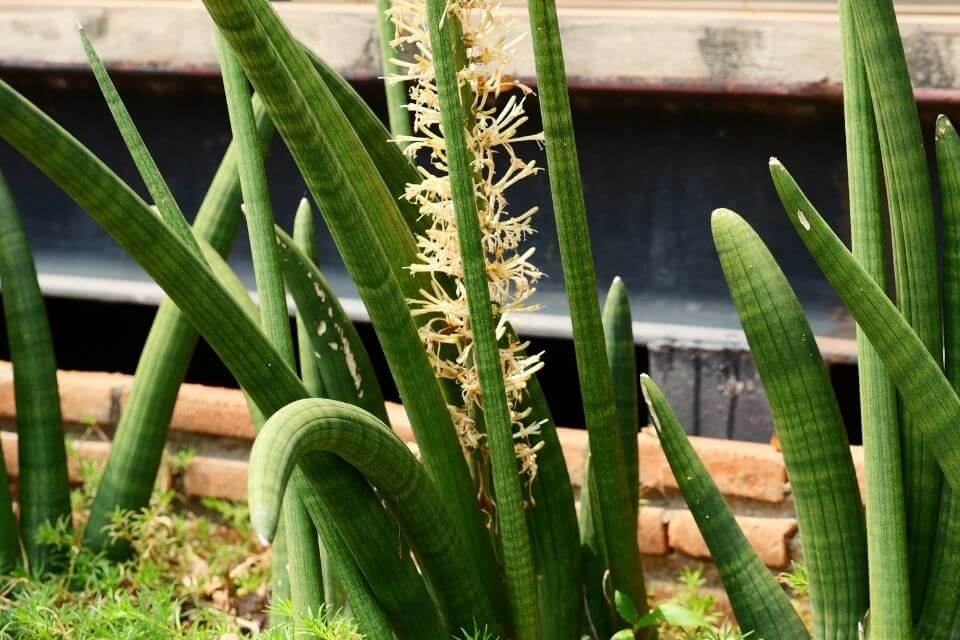
Sansevieria Cylindrica Propagation
Sansevieria cylindrica propagation is very simple can be done by leaf cuttings or division (rhizomes).
1. Division
To propagate this plant by division, divide it into two-three sections using shears or a sharp knife. Make sure each section has one growing node (point) and some roots. Then pot each section with potting soil in their containers.
After several weeks, you will see net growth; this means the plants will be ready and transplanted in their pots.
2. Leaf Cuttings
To propagate this plant by leaf cuttings, follow the following steps
- Take the healthiest leaf cut it off at the base.
- Then divide the leaf into four-inch pieces.
- Put the leaf pieces into moist potting soil.
- Ensure the leaf pieces are kept in a sunny spot to get the necessary warmth.
- Make sure you water the leaf pieces regularly.
After several weeks, you will observe net growth and this will mean that the plants will be ready for transplantation into their containers.
Sansevieria Cylindrica Problems And Common Diseases
Sansevieria cylindrica is a succulent plant that is resilient but is susceptible to diseases and pests. Mealybugs and vine weevils are known to attack the plant and root rot is the most common disease.
Mealybugs
It is soft-bodied insects that are a nuisance to this succulent plant. They attach themselves to the stem and leaves of this plant, where they suck the sap. They also cause discoloration of leaves and wilting.
You can control these pests by wiping them off the plant using a cotton swab containing rubbing alcohol.
Vine Weevils
It is a type of beetle that likes to attack this succulent plant. It is brown-black and feeds on this plant’s stems and leaves, eventually causing them to wilt and die. If you see drying succulents or any wilting, be sure to check for vine weevils.
The vine weevils are challenging to eliminate, but you can use a few methods to stop them. One is to spray the plant with a powerful jet of water to remove the beetles and then you will collect and dispose of them.
The other method is to use neem oil to the leaves or insecticidal soap. The beetles will die within a day if you use this method.
Spider Mites
Spider mites suck the sap, which weakens the plant and causes shedding and wounds on the leaves. This can be eliminated by increasing the humidity of the plant environment and washing them off.
Fungal Infection
Fungal infections include the red leaf spot and southern blight. The leaves are the most affected part. The plant will appear red-brown, have sunken lesions, or have a white web growth that hardens and turns dark brown.
Fungal infections lead to wilting and eventually kill the plant. Moreover, you can avoid fungal infections by maintaining the ideal temperature, using well-drained soil, monitoring your watering, and keeping the leaves dry.
Root Rotting
Root rot is another common disease in this plant. The roots become mushy, blackened, or rotten. The leading cause of root rotting is overwatering the plant. The soil will become water-logged and the roots will begin to rot.
Grow your plant in well-drained soil such as the cactus mix to prevent this. You should water the plant regularly; however, when growth is slow, water it occasionally and keep the soil dry from fall to winter.
Monitor the leaves to ensure your watering is okay. If they are bright green, your watering is fine, but you need to do more watering if they are dull.
FAQs
Does Sansevieria Cylindrica Flower?
Yes, it does flower. The snake plant flower is in form spikes found on the leaf bases. These flower spikes tend to grow in clusters of white-green blooms that are tubular and tinted with pink shades.
How Tall Do Sansenvieria Cylinfrica Grow?
It grows to three to four feet as a house a plant but may extend to a taller height of six to seven feet outdoors in warmer temperatures of seventy to ninety degrees Fahrenheit with low humidity and well-drained soil.
How Much Sun Does Sansevieria Cylindrica Need?
The plant thrives well in full sun or bright indirect sunlight. Although it can tolerate a place with low light, it will not achieve maximum growth in the dark. However, very intense light will affect the plant’s wellness, causing the leaves to discolor.
Are African Spears Toxic To Cats And Dogs?
The African Spear Plant is a toxic plant; it is an air cleaner and removes toxins. For this reason, it is one of the house plants that are toxic to cats & dogs. It is also may harmful for humans when ingested.
Can I Grow A Dracaena Angolensis Plant In A Greenhouse?
Yes, you can grow the plant in a greenhouse. It is easy to grow and needs less maintenance. It can tolerate weeks without water; however, if you over water, it will die.
It only needs water about every three weeks and grows well in sandy loam soil. They should be spaced 0.7 to 0.8 meters apart when growing these plants.
Why Do Sansevieria Cylindrica Brown Tips?
Overwatering and a lot of dampness in the soil cause the leaves’ tips to turning brown. During the plant’s growth, water it once or twice every week. During cold months water the plant once a month.
Over-chlorinated water, exposing the plant to heat and excess direct sunlight, causes the plant to have brown tips.
Is Sansevieria Cylindrica a Suitable Houseplant For Beginners?
Yes, it is a suitable houseplant for a beginner. It is an ornamental houseplant and if the necessary conditions are met, the plant will do well indoors. They will thrive even if you are forgetful or careless, making them the perfect houseplants for beginners.
Where Do I Buy A Sansevieria Cylindrica Plant?
You can buy the plant at different houseplant online stores and websites. Most of these websites offer delivery up to your doorstep. You could visit the supermarket and purchase the same.
The Sansevieria cylindrica houseplant is readily available in many stores and shops.
Takeaway
The sansevieria cylindrica are excellent houseplants; they require low maintenance and are easy to propagate. These plants are less labor-intensive; you will only need to water them once or twice a week and once a month during winter.
The diseases and pests that attack these plants are easy to manage and control if you follow the correct method. But you will not have to go through this if you work your houseplant properly.
Lastly, this plant does not need you to have experience in caring for houseplants. It is an excellent choice for beginners because they are easy to grow and requires minimal care.

